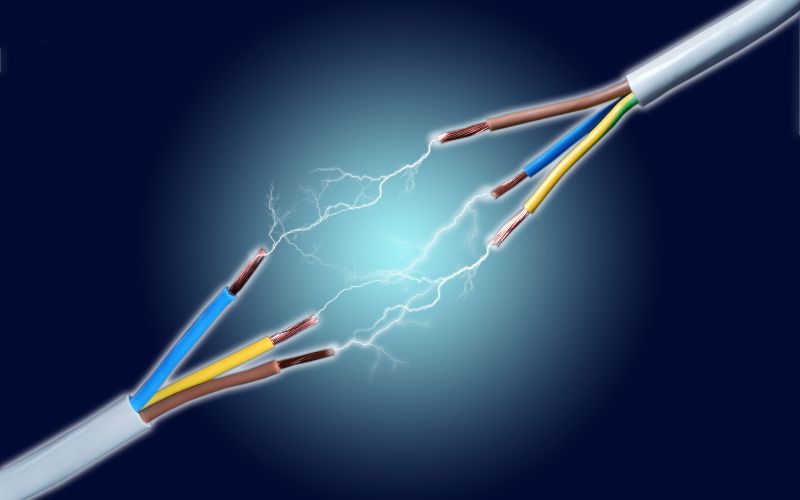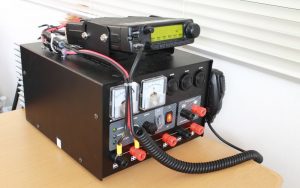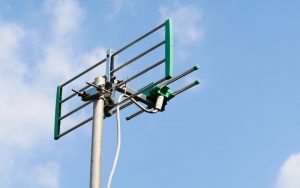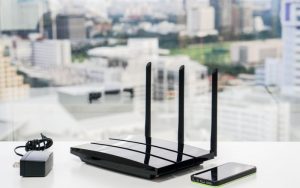A surprisingly common question posed by many people is that of do ham radios operate without electricity.
It’s possible that this question is raised due to ham and CB radios being used by preppers and similar who seek to equip themselves with backup or emergency solutions if they are faced with a loss of utilities or grid outages.
The simple answer is that ham radios need electricity to work, however the source of the electrical supply can be varied and most ham radios are not dependant upon mains grid based power. This means that ham radio sets can be operated from batteries, power banks and other sources of power.
The majority of ham radio sets operate from 12 volts DC electricity rather than mains power.
This makes a ham radio an ideal option for communication if the mains power goes down due to storms or other event.
Whereas mobile phones, land based telephones and internet communications are all dependant upon reliable mains electricity, radio communications, such as ham radio and CB, can make use of alternate power sources.
This makes these forms of communication ideal choices for emergency situations or disasters.
Most ham radios are not equipped with a power supply which means that you’ll have to put something in place to power your set although most handheld units are fitted with rechargeable batteries.
Thankfully there is a wide range of options open to you that will serve to power your radio set and should you choose, you can have a selection of these to ensure that, whatever the occasion you can get on the air.
Mains power supplies for ham radios
Most ham radio operators will use some form of mains power supply in normal times ie. when the grid is available.
These power units tend to be reliable and are often available in different sizes and capacities to suit varying power needs – a high powered ham radio transmitter will require more power to work correctly than one that transmits at low power levels.
Mains power supplies convert and reduce the grid AC power to a level and type that is suitable for a ham radio – typically to 13.8 volts DC, and they provide a steady, safe current for the radio to function reliably.
If you have access to mains electricity then a mains power supply is a good choice for use of the radio in ‘normal’ times, however having a ‘backup’ source of power is also a good idea for those times when the grid power may be down or for when you do not have access to the grid.
Rechargeable power banks for ham radios
A great source of backup power for ham radios and other devices that need electricity is a rechargeable power bank.
These units can often be charged in a variety of ways with the two most common ways being from a mains outlet or from solar panels.
They are almost large, high capacity batteries yet can supply electricity at a variety of voltages from mains voltage, through to 12 volts and lower DC.
They are widely used by campers and other people that require a reliable and steady source of power and, due to their capacity for long, steady power delivery they are ideal options for ham radio operators for use off the grid.
Batteries for ham radio use
Car batteries
If you have access to a 12 volt battery supply then you can keep your ham radio on the air.
The most common and widely accessible source of 12 volts DC for most amateurs is from motor vehicles and car batteries can offer long periods of use before they require recharging.
It’s quite a simple task to connect a ham set to a car battery and, providing you don’t run the battery totally flat, you can start the car engine to keep the battery charged ( providing, of course that the vehicle has enough fuel to run).
Car batteries can also be used outside of the vehicle and can be stored in garages or sheds in readiness for use off grid and can be kept charged by using mains powered chargers or other systems such as solar.
Deep cycle batteries
An alternative form of battery that is more suited to ham radio use is the deep cycle battery.
These batteries are designed for long term use and, unlike car batteries, will withstand regular charging and discharging without any impact on capacity or power delivery.
Whereas car batteries contain acid based fluids and emit flammable gases, deep cycle batteries are often lithium based, have no spillage risks and have high capacity levels.
Deep cycle batteries are also available in a much wider range of capacities and physical sizes and weights, many will easily fit into a rucksack, making them an ideal choice for portable or mobile use.
They can also be recharged via mains chargers or by alternative sources of energy such as solar panels.
Handheld, rechargeable portable ham radios
Many ham radio operators have a portable, handheld device in their shack.
Most, if not all handheld ham radios are rechargeable, fitted with long life, high capacity lithium batteries which power the radio.
Although handheld ham radios do not have the same range or functions of the larger sets, they provide a reliable and cheap way for radio hams to get on the air and to stay contactable if regular, grid reliant systems are down.
Rechargeable hand held radios are widely available and frequently cost less than $40.
Final Words
So, ham radios need electricity to work, but this does not mean that you have to have access to a mains power supply.
If you do have access to the grid then mains power combined with a 12 volt power supply is probably your best bet for reliable, long term use of ham radios.
When the grid goes down, however, and at some point it probably will due to bad weather then a ham radio can be powered up with alternative 12 volt power sources such as those outlined above.
If you want to be able to maintain communications without grid power then batteries, power banks and even solar energy will help you to stay in touch.
Read Next
- Can a ham radio talk to a CB radio?
- Can a TV antenna be used for ham radio?
- Can ham radio be traced?
- Can ham radio interfere with cell phones?
- Can ham radio interfere with tv reception?
- Can ham radio interfere with wireless internet?











